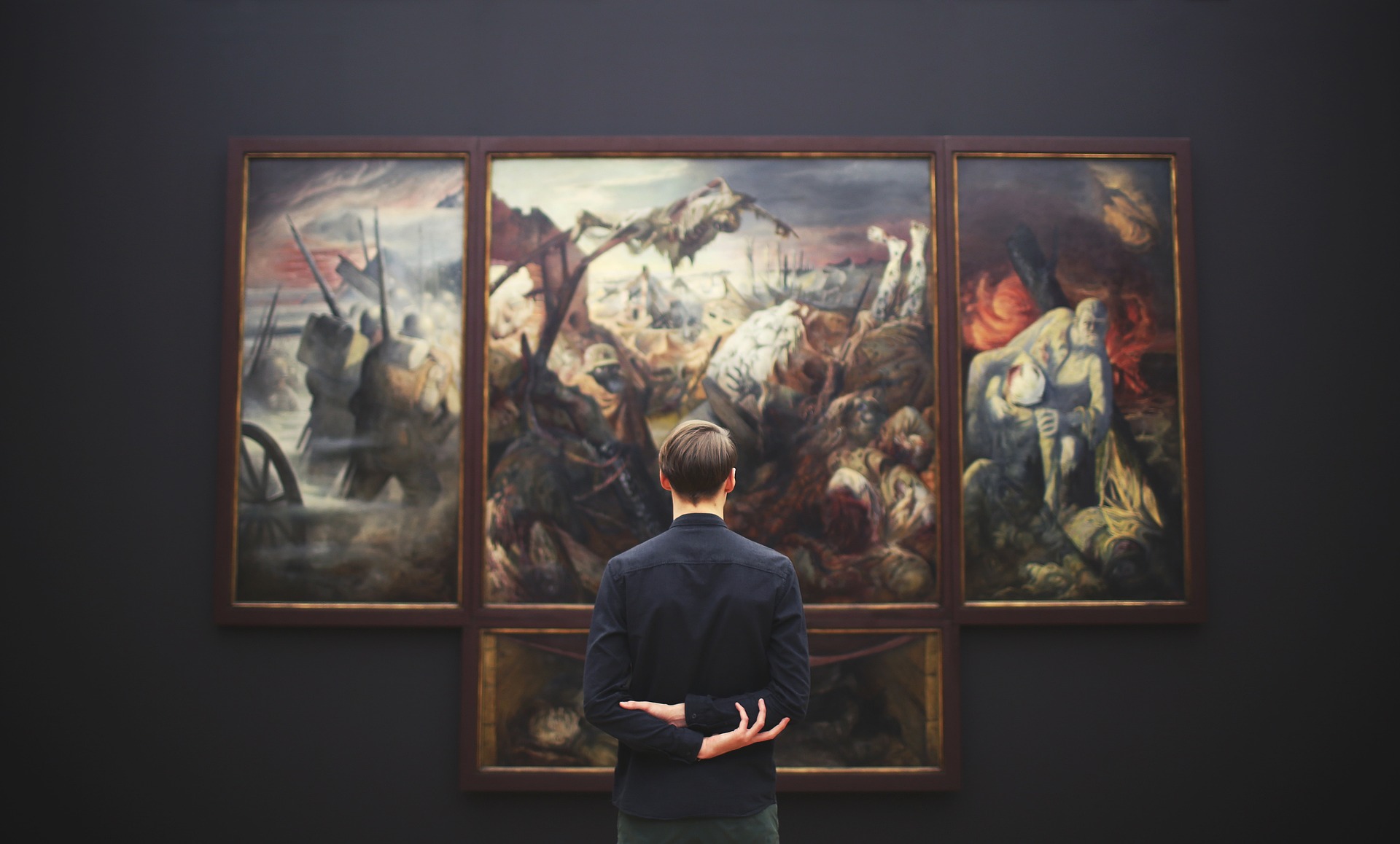You have to be the change to bring the change.

The Ultimate Guide to How Customers Choose Art
Our content is reader-supported. We may earn a commission if you make a purchase through one of our links.
When you run an errand to the grocery store, you put what you need in your cart like eggs, tomatoes, sauces, cheese, shoe cleaners, cloth hangers, and so on. Almost everything in your shopping cart has a well-defined purpose. Shopping for art, on the other hand, is vastly different. It’s because there is no veritable “need” for a painting. How customers choose art is a subjective decision that varies for everyone.
You may make a trip to an exhibition with the intent of enjoying pleasing colors and feel drawn to an artwork. Or you may place a pickup order for some paintings by your local artist because the walls in your new, well-furnished apartment could use some character.
So, how do customers choose art?
The Psychology Behind How Customers Choose Art
To explore the difference between paying for various kinds of materials, we can refer to Maslow’s hierarchy of needs. In 1943, an American psychologist named Abraham Maslow proposed a theory about the hierarchy of needs.
To him, needs have five levels, and the sequence determines the human motivation behind any action. For instance, from brushing your teeth in the shower to signing a business contract. In this five-tier model, physiological needs for food and clothing take precedence over anything else. It refers to the “necessary” drive you feel while, for example, investing in winter clothing as the days get shorter and colder.
The four bottom levels of Maslow’s hierarchy classify as deficiency needs because their lack of fulfillment motivates people. His model suggests that not satisfying these renders unpleasant consequences, such as the lack of adequate social interactions. In turn, this could damage one’s self-esteem and cause mental turmoil.
However, the highest or fifth level in the triangle consists of growth needs. Consider being starving-hungry and eating a delicious meal. You’ll likely begin by savoring every bite, but eventually, the need to gobble up everything will decrease because your stomach has limited capacity.
The economic theory of marginal utility also affirms the same behavior, proposing that motivation diminishes as the need is met. But growth needs have a direct relationship between cause and need. The more a person cares about exploring their potential and seeking meaning in life, the more they are compelled to continue it.
Art also falls under the self-actualization level in theory as a means to fulfillment. Art enthusiasts often describe it as ‘food for the soul.’ Hence, the imperative role of subjective reasoning whenever someone decides to pay for artwork comes in.
What Motivates People to Pick Certain Artworks?
1. Personal Reasons
Customers are more likely to buy artwork if they share a connection with it. This relatability could be their belonging to the same place, such as the nostalgia felt by an immigrant purchasing something from their hometown.
Some people regard supporting their local artists as a means of generosity and social work. Moreover, recently the campaign for helping small businesses has been trendy on social media. It’s now cool to purchase things from small-scale entrepreneurs or home-based businesses.
2. Their Love of Art
More typically, people invest in the things they love, given that they can afford them. Paintings that inspire or motivate them to dreams have a better chance of being chosen over others. Hence, a dreamy landscape that captures a romantic world in pastels may be more appealing than one depicting a piece of furniture in the backyard. However, it also depends on the artistic taste of the customers.
If they are well-versed in art movements, they are likely to know what they want even before stepping into a gallery. To someone who gravitates towards classical art, canvases with grand settings and historical narratives will appeal more than an abstract work.
On the other hand, an impressionist lover feels drawn to the raw brushstrokes in the artwork. Therefore, they will be more interested in dreamscapes that leave a deep impression on the mind. To them, the rich hues of the sunrise in a painting or the blotches of grass promise greater meaning than the mathematical correctness of the architecture.
3. For Decoration Purposes
Another factor that influences how customers choose art is what they intend to do with it. They may be building a personal collection as a hobby similar to book lovers, for the masterpieces that speak to their inner fantasies. Perhaps they want to transform a room into a new art studio and are looking for inspirational artwork for their walls.
Commonly, a customer may be inclined towards the interior design of their living space. In that case, their choice of artwork will have to match the “vibes” they want their home to carry. The color scheme of the walls and the furniture also becomes essential, as do the themes and style of any older frames. Consider a grand TV lounge with line art adding to the ambiance; a portrait or a full-fledged realistic landscape will look out of place in such a setting.
How Pricing Influences a Customer’s Decision to Buy Art
Naturally, pricing is another consideration that nearly everyone undertakes while buying anything. As an artist, you may feel that there is no straightforward method of pricing your art. It reflects your passion, the quality of the material, and the size of the canvas. Unlike a kilogram of sugar or a liter of milk, there is no pre-set market price (announced by the government or determined by the free market forces) for an unprimed 8×8 canvas.
Thus, the whopping cost of an otherwise enthralling painting may become a hurdle for someone with artistic taste and fewer monetary resources. As luxury items, most artworks are more affordable to a particular social class than others. You may have experienced that “art lovers” are willing to invest millions of dollars in a single canvas in auctions or museums.
But that remains divorced from the truth in real life, where an overwhelming majority puts the item back on the shelf after stealing a glance at the price tag. Hence, creating a balance between receiving your due worth and ensuring that the paintings are affordable can be a challenge as an artist.
Final Thoughts
Conclusively, the price of the work, the taste of the customers, and their intentions behind the purchase can determine how customers choose art pieces and which ones fall short of their criteria.



